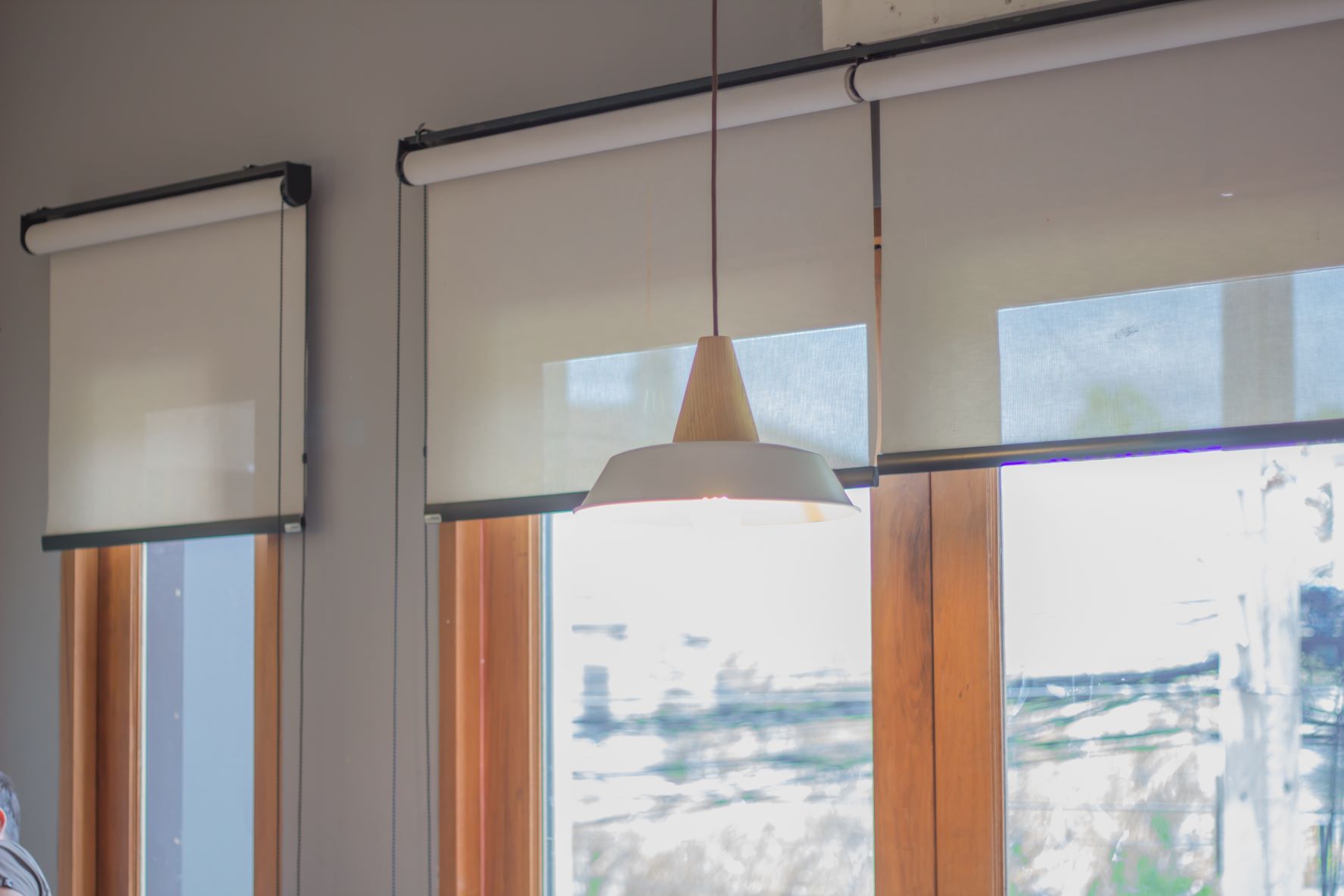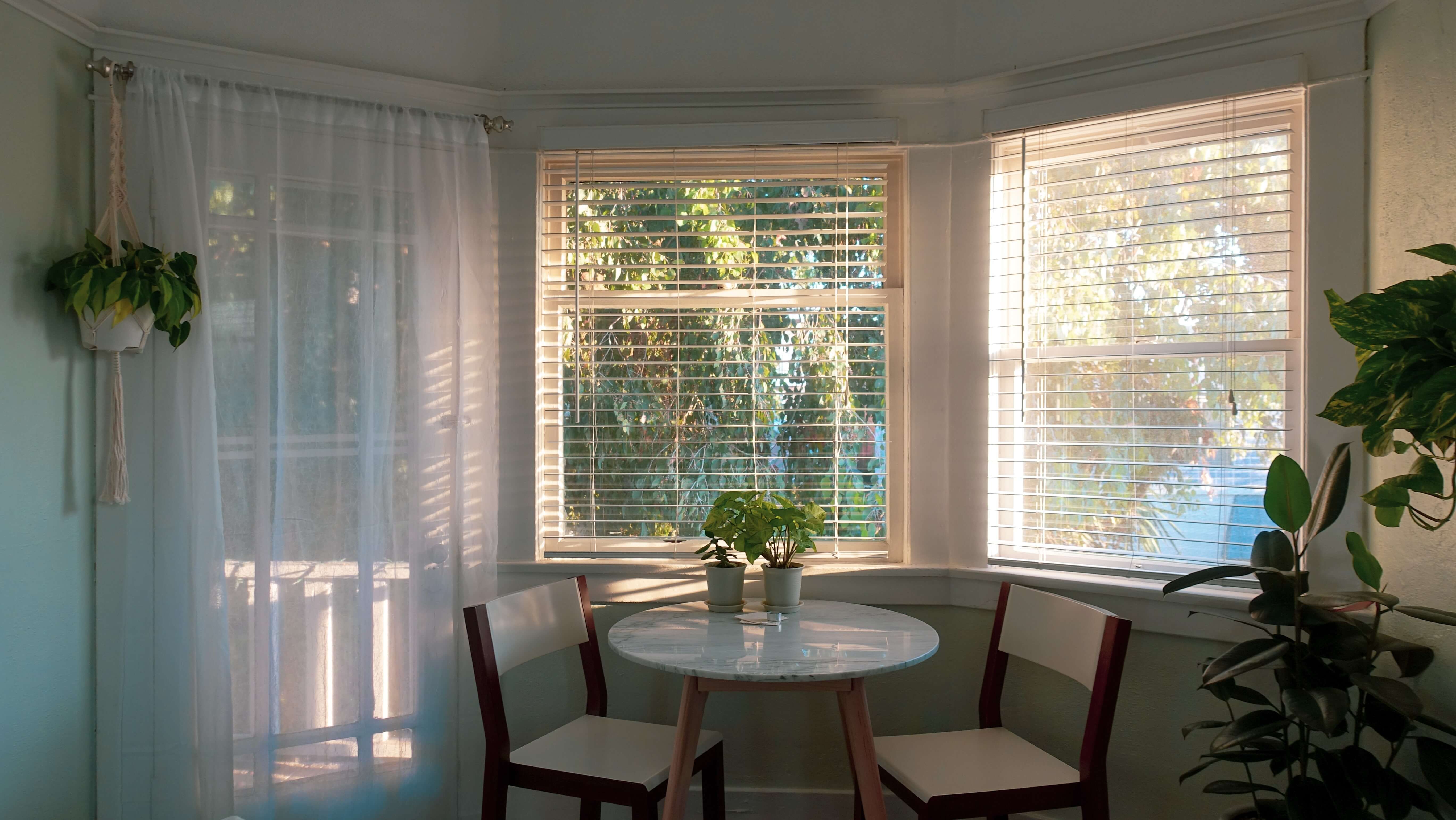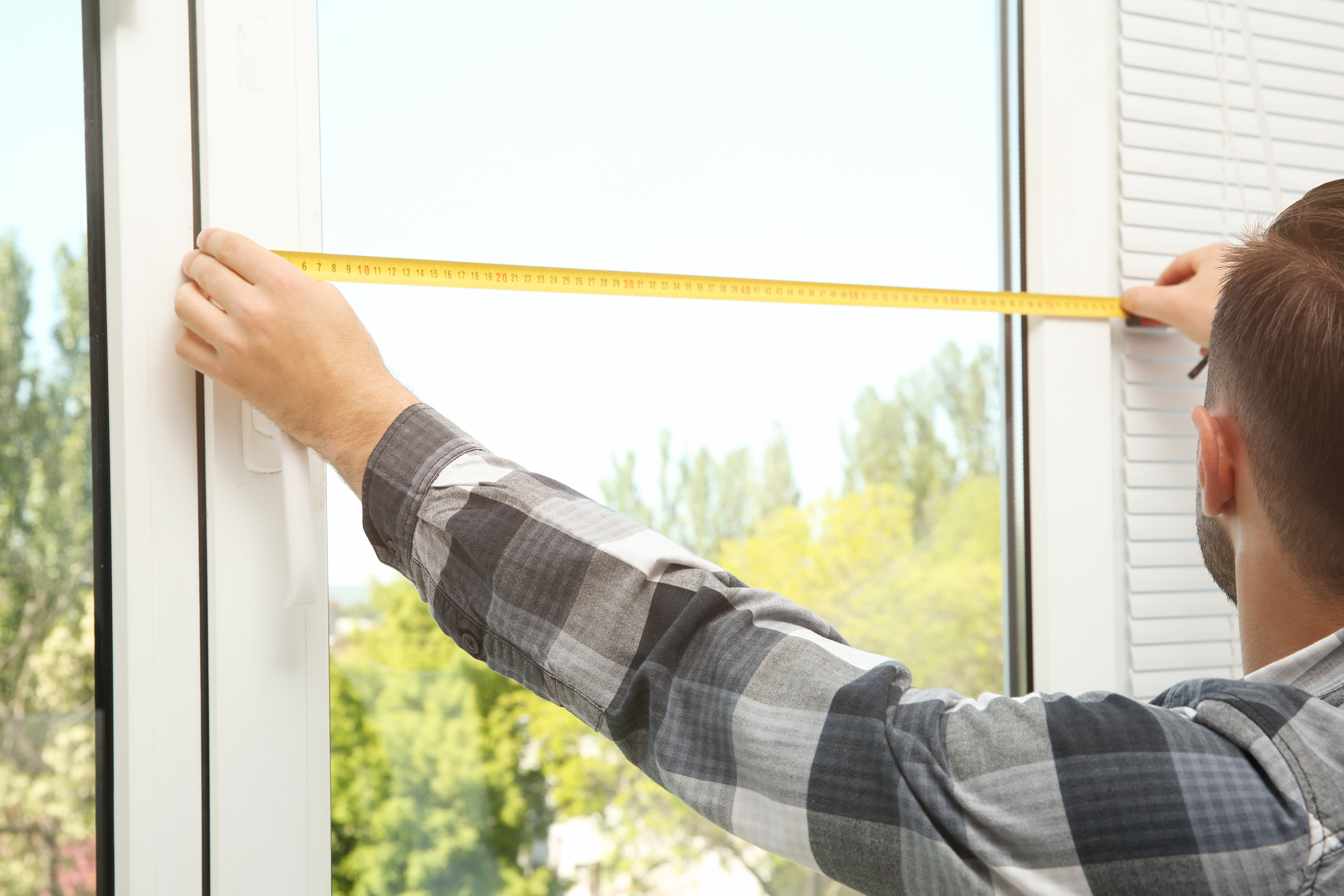Before shopping for new blinds or shades, you need to know exactly how your new window treatments are going to fit over or in your window. If you want to skip the challenge and hire a professional, we support that idea. But If you aren’t ready to call a professional, the best place to start is taking the measurements yourself.
Starting Point: Use a Steel Tape Measure
To start, make sure you have a steel tape measure. Steel tape measures provide the most accurate results and can survive more wear and tear than fiberglass tapes.
Is There a Standard Window Size?
Quick Answer: There is None.
You may assume windows come in a standard size, but we’re here to clear up the misconception. There is no such thing as a “standard size” window. Likewise, just because all the windows in one room appear to be the same size (yes, even if they’re right next to each other), you should make sure to measure all three.
Outside-Mounted vs. Inside-Mounted Window Treatments
You’ll have to take a different set of measurements depending on the style of window treatments you’re going to get. Inside mounts usually provide a clean look and sit neatly within the window frame. Outside mounts, however, can give the illusion of a longer, wider window or help hide an unattractive window frame.
Should I Measure for an Inside or an Outside Mount?
Many of the same principles apply for inside versus outside mount applications. The difference with an outside mount is that you can build out the frame and add depth where you want it.
Inside-Mount Measuring
.1).jpg)
If you’re getting an inside mount, you’ll need to measure the exact width of the top, middle, and bottom of the window. Whatever the results are, use the narrowest width to determine the window width. Next, measure the exact window height on the left, in the middle, and on the right. Use the longest height in this case, if there’s any variation.
Outside-Mount Measuring

For outside mounts, measure the exact width where the window treatments are to be placed. For example, if you’re installing blinds, measure the width where the proposed headrail will be sitting. Add about 3 inches of overlap for privacy and better light control (the three inches should be 1.5 inches on the right and 1.5 inches on the left of the window). To measure height, measure from the top of the proposed headrail location to the base of the sill. If you have no sill, measure to where you want the blind to fall. Add 1.5 inches to the final measurement for better light control.
How to Measure for Curtains
Start by measuring the width of the rod. In terms of material, you should usually aim to purchase about twice as much material as the width. For an extra lush look, some people aim for three times the width.
Measure the length based on how far down you want your curtains to hang.
- For sill length: simply measure to the bottom of the sill.
- For apron length, measure a few inches below the sill.
- For café length, you would measure the bottom half of the window to the sill.
- For floor length, you simply measure from the rod to the floor. (If you don’t want your curtains to touch the floor, you should take off at least a ½ inch.)
- For extra long curtains, you can simply measure to the floor and add as many inches as you want. (Extra long curtains are sometimes defined as curtains longer than 10 feet.)
How to Measure for Vertical Blinds on a Sliding Glass Door
Vertical blinds are a popular choice for sliding doors. To measure for a sliding glass door, you will want to use a process that is similar to measuring for outside mounted window blinds.
For the width, you should measure from one end of the door trim to the other. If there is no trim, be sure to add 1 to 3 inches from the edge on either side to prevent light leakage.
For the height, start 2 to 3 inches above the top (to make space for hardware) and measure to the bottom of the door. You may be tempted to measure to the floor instead of the door if you want to minimize light entry. If you do this, we recommend keeping at least a ¼ inch of space above the floor to prevent your blinds from dragging on the ground.
How to Measure a Bay Window for Blinds
In most instances, bay windows are challenging to measure and should be left to professionals. Nevertheless, we have provided some insight on how to measure for blinds or shades if you want to try it yourself.
- First off, you need to know the size of the headrails you will be using. How much space the headrail takes up needs to be determined so that they do not interfere with one another during installation.
- Second off, you need to determine whether you are doing inside mounts or outside mounts. If your windows are close to each other or if they touch each other, you should plan on installing inside mounts and measure accordingly. Many bay windows need to use inside mounts because outside mounts are hard to position when there is limited space between the individual windows.
- After you have chosen a product that you like, you will have to look up the specifications for the product. Check out what the minimum flush depth is for an inside mount. You will need to use that minimum depth to cut out a cardboard or paper square for where each mount will go. This will allow you to see how far out your product will be mounted. There should be two cutouts for the edge of each window treatment.
- Once you’ve placed your markers on the ceiling, you can then measure between the outside edges of each cardboard or paper cutout.

Measure Twice
Remember the proverb “Measure twice and cut once”? It’s a carpentry rule of thumb meant to prevent people from making a mistake they can’t take back. After you take all your measurements once, retake them just to be sure.![]()
Mistakes to Avoid
- Forgetting to measure the width of your windowsill: If you have a windowsill, having that measurement might also help you determine whether or not a set of blinds or shutters will fit in the window.
- Misusing the tape measure: You shouldn’t have to bend the steel tape at all to get a proper measurement. To get an accurate measurement, rest the edge of the metal tape measure dispenser against the edge of the windowsill or area to be measured. There should be a small measurement on the tape measure, which you should add to the total.
- Mixing width and height: It’s easy to get the two confused if you don’t mark them down correctly, which is why it’s helpful to double-check your measurements.
- Not adding width to outside mount blinds: If you’re mounting blinds outside the window, you do not measure the window opening. Instead, you should measure the exact size you need the product to be. The width measurements should typically be 2 inches wider than the opening on either side (4 inches total). The height should start about 3 inches above the window trim, which allows for mounting brackets. Without the extra inches, you risk gaps in the window treatments where the light will shine through.
- Not measure to the exact 1/8th of an inch: Windows can have small variations because of the framing or from your house settling on its foundation over time. Always measure each window separately, even if two or more windows appear to be the exact same size.
- Measuring the existing window coverings inside of the window opening itself: You may think you just need to measure for the size you want the blinds to be. Do NOT do this. You should always measure for the exact size of the window opening, edge to edge. Don’t make the mistake of thinking your blinds company wants to know the size of what the blinds should be – leave that to us!
- Not measuring for 3 places for each window: height, width, and depth. Depth is particularly important based on whether you’re measuring for an inside or an outside mount.
- Not using a proper measuring tape: Rulers, cloth measuring tapes, or yardsticks need not apply! You should always use a steel measuring tape. If you don’t have one already, pick up a full-sized steel measuring tape at your local hardware store.
Windows aren’t all the same size, so measurements are essential to getting your custom window treatments done correctly. If you’re unsure about the measurements, you could always call our team at Bloomin’ Blinds. We provide custom window treatments that satisfy our customers nationwide. Our professional window treatment installers understand precisely how to measure the windows in your home for whatever effect you’re looking for. From blinds to shutters to window draperies, we handle it all. Call us to schedule a free estimate today!
 About the Author: Kevin Stuart, Bloomin’ Blinds
About the Author: Kevin Stuart, Bloomin’ Blinds
Kevin has been a part of the Bloomin’ Blinds team since 2004. He is an expert in window covering repairs and has been known to finish even the hardest repair in 12 minutes and 26 seconds (the fastest Bloomin’ Blinds repair time yet). Kevin loves puzzles and values fixing things and bringing smiles to the faces of his clients.
